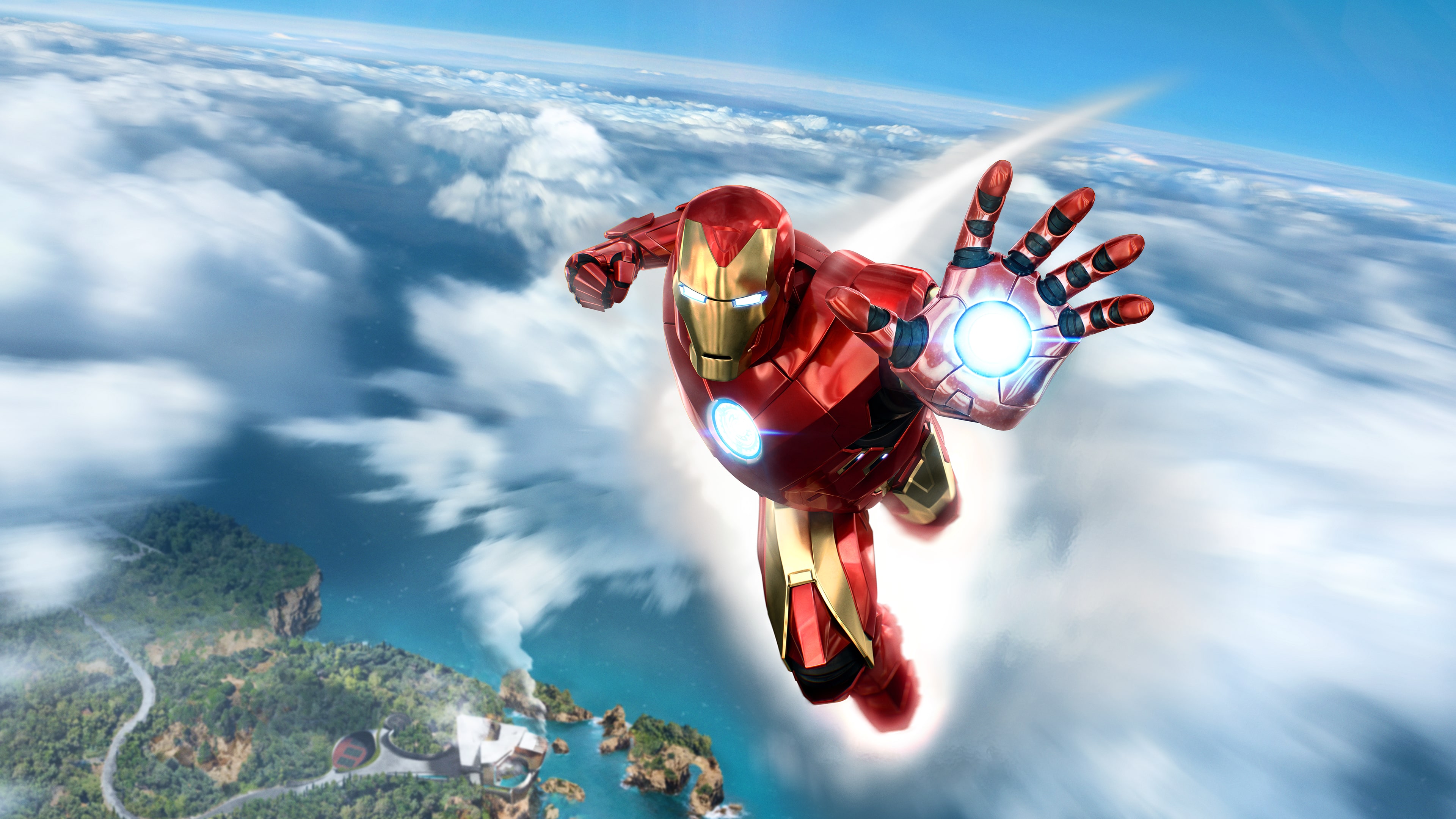

And this is in addition to separate load screens. This slow plod is exacerbated by load times and those transition screens, and it’s particularly jarring in PSVR, which often leaves you staring at an entirely blank canvas for over ten seconds, trapped.

Maybe they could have been layered over more relaxed flying sections? I think they spoil who’s actually pulling the strings in one of the first loading screen text blurbs.

Most of the beats are predictable, and there are far too many static exposition monologues. The antagonist, Ghost, is a good example of how obvious and flat the campaign story is. It’s all noticeably rougher inside the PlayStation VR headset. Don’t be tricked by the visual fidelity of early screenshots and trailers. It’s waves of drones, augmented-reality lever-pulling, chase scene and repeat.
#IRON MAN VR PS2#
Whether it’s beige canyons and cityscapes that look like they were made for a PS2 game, barring the introductory plane fight and Tony’s own coastal mansion, most environments are pretty dull to look at and often just as dull to fly around. The same can be said for several of the levels. It’s where the game begins to fall short. On top of that, there are also only a handful of drone models, and none of them are particularly elaborate looking, either. Forget the idea of going toe-to-toe with Marvel villains like in Marvel’s Spider-Man. Worse still, it’s not as if Ghost even matters - you’ll be fighting drones and robots for most (pretty much 90 percent) of the game. (Maybe they could have been layered over more relaxed flying sections?) The unimaginative antagonist is a good example at how obvious and flat the campaign story is. Ghosts from his past (the villain-of-the-week is literally called Ghost) are here to remind him that it isn’t always easy to move on. Stark is getting out of the weapons business, and focusing on his bona fide superhero-ing. The campaign story beats will sound familiar to anyone who’s watched a couple of the movies or followed the comics. These never quite fit in with Iron Man VR, whether that’s because he’s got so many long to mid-range attacks, or because it’s disorientating and nausea-inducing to fly around punching flying robots in VR. While you can custom load Tony with weapons, you’ll end up relying on load-outs that you’re most competent with - the repulsor beams and heat-seeking missiles - and largely avoid melee attacks. Now, you might have a stronger constitution, but don’t say I didn’t warn you. The last time this has happened to me was during the now-notorious Resident Evil 7 demo at E3 a few years ago - an issue Capcom managed to fix for the retail game. I had to take regular breaks to pace myself. The multi-axis movement is more aggressive than most virtual reality titles, so that’s probably the cause. Iron Man VR made me feel queasy if I played for longer than 20 minutes. It feels like you’re Iron Man and it feels good. To help you see where you’re going, the Move controller buttons (it doesn’t work with the DualShock 4) rotate your perspective, making it easier to track enemies and line up your attacks. It all sounded gimmicky, yes, but there are moments where the control system sings. You fly one-handed, blasting drones with the other, you dash up to a robot and punch it away, launching high into the air again to avoid being fired on. Arch your hand, and your repulsor rays are immediately ready, just a trigger squeeze away.Īfter some practice, it all starts to come together beautifully. You fly just like Iron Man does, pointing your hands down to blast up, forward, back or sideways. At the start of the game, you’re guided through the suit’s abilities with some holographic flying lessons around Tony Stark’s multimillion-dollar estate.
#IRON MAN VR UPDATE#
Update your settings here, then reload the page to see it.Ĭombining Marvel intellectual property with virtual reality is a tall order, but when you first blast off and fly across land and sea, it’s one hell of a feeling. This content is not available due to your privacy preferences.


 0 kommentar(er)
0 kommentar(er)
